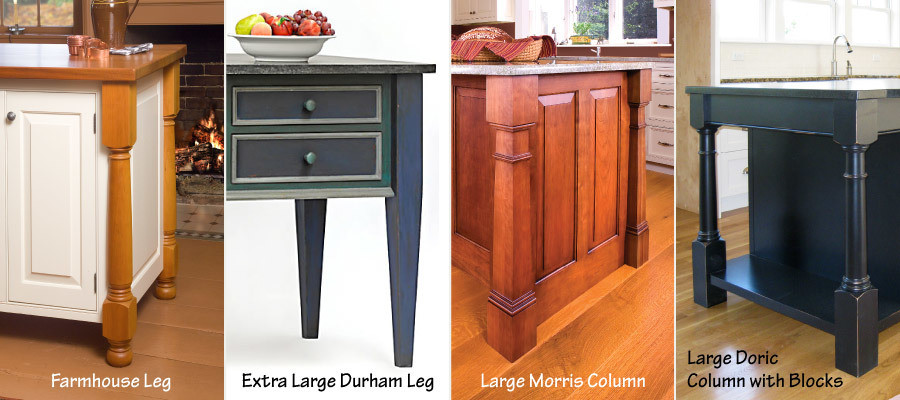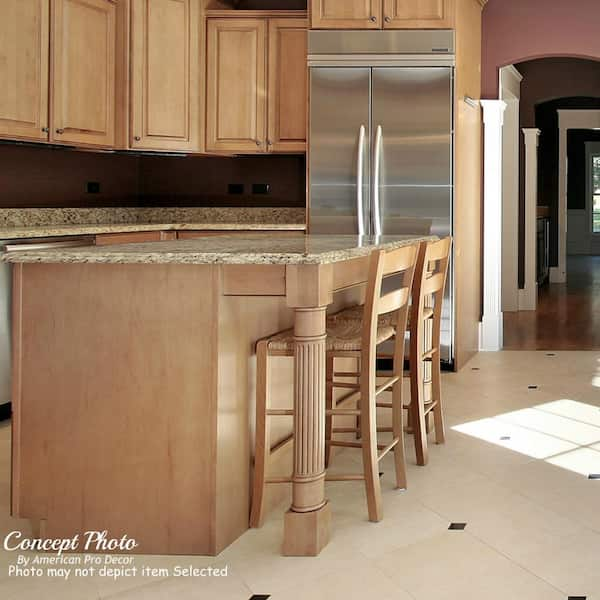Kitchen Island Legs for Modern and Standard Kitchens
Kitchen Island Legs for Modern and Standard Kitchens
Blog Article
A Guide to Selecting the Ideal Kitchen Area Island for Your Home
Comprehending your cooking area's spatial dynamics is the initial step, guaranteeing that the island fits seamlessly without interfering with the flow. The choice of products and coatings also plays a crucial role in balancing the island with your cooking area's overall design.
Examining Your Space
Prior to picking a kitchen island, it is necessary to extensively evaluate your room to make certain the addition will be both practical and visually pleasing. Begin by gauging the readily available location, consisting of the size, length, and height of the cooking area. Exact dimensions are important to stay clear of acquiring an island that bewilders the area or one that is overmuch tiny.
Consider the existing layout and just how the island will certainly integrate with the current traffic circulation. A well-placed island needs to not impede or block paths access to vital home appliances, such as the fridge, sink, and oven. Leave adequate clearance space-- usually around 36 to 48 inches on all sides-- to allow for comfy movement and work area efficiency.
Next, assess the all-natural light and sightlines within your cooking area. An island that obstructs a window or disrupts aesthetic cohesion can make the area feel confined and dark. Think about just how the island's placement will certainly impact lights and exposure, guaranteeing it enhances rather than detracts from the kitchen's atmosphere.
Identifying the Objective
Identifying the objective of your kitchen island is a critical step in guaranteeing it meets your particular demands and choices. Before delving right into design or size factors to consider, it is necessary to clarify what main function the island will certainly offer in your kitchen. Will it be a central center for dish preparation, a laid-back eating location, or possibly an extra storage space remedy?
For those who appreciate cooking, integrating devices such as a cooktop or sink may be necessary. Furthermore, ample counter room for cutting and mixing, in addition to easily accessible storage space for kitchen devices and active ingredients, can transform the island right into an efficient workstation. On the other hand, if the island is intended to assist in social communications or serve as an eating area, seating setups come to be paramount. In this case, making sure adequate legroom and surface for comfy dining experiences is essential.

Selecting the Right Dimension
Selecting the right size for your kitchen area island is an equilibrium of capability and room optimization. An optimal kitchen island ought to offer sufficient workspace while guaranteeing that motion around the kitchen stays unobstructed. Begin by determining your kitchen room; a minimum clearance of 36 to 42 inches around the island is required to permit for comfy movement and availability.
The measurements of the island need to reflect its designated use. If the island will serve primarily as a prep location, a width of 24 to 36 inches might be enough.

Lastly, ensure that the island's dimension complements the total kitchen area layout, staying clear of any kind of overwhelming presence that could diminish the kitchen area's aesthetic and energy - kitchen island legs. Mindful preparation and exact measurements will help you accomplish a efficient and harmonious kitchen environment
Choosing Products and Finishes
After figuring out the ideal dimension for your kitchen island, the next step involves selecting appropriate products and finishes. The choice of materials considerably affects both the aesthetic charm and performance of your kitchen area island. Popular materials for counter tops include granite, quartz, and butcher block, each offering unique benefits.
In addition to the counter top, think about the materials for the island base. Solid timber supplies a traditional, strong appearance, while stainless steel provides a streamlined, modern-day appearance and is simple to clean. Repainted surfaces can introduce a splash of shade, with alternatives varying from low-key pastels to vibrant, vivid tones.
Pay focus to the sturdiness of finishes, specifically in high-traffic areas, to keep the island's appearance over time. Choosing the ideal materials and coatings will certainly improve both the functionality and aesthetic charm of your kitchen area island.
Integrating Practical Functions
Integrating practical functions right into your kitchen area island can dramatically boost its energy and comfort, changing it right into a flexible focal point of your kitchen area. One vital attribute to consider is extra storage space. Integrating cupboards, cabinets, and open shelving can provide much-needed area for cookware, utensils, and little appliances, assisting to keep a clutter-free atmosphere.
An additional beneficial enhancement is a built-in sink or cooktop, which can simplify meal preparation and clean-up processes. A sink can promote tasks such as washing vegetables and cleaning up dishes, while a cooktop can enable food preparation straight on the island, fostering a more social and interactive food preparation blog here experience.
Consider incorporating seating options, particularly if your cooking area functions as an informal dining location. Bar stools or built-in benches can transform the island right into a multifunctional space for dishes, homework, or laid-back celebrations.
Lastly, integrating electric outlets into your kitchen island can boost its functionality. Outlets offer hassle-free access for small cooking area home appliances, charging stations for electronic tools, and extra illumination choices.
Final Thought

Prior to selecting a kitchen area island, it is necessary to extensively assess your space to guarantee the addition will be both practical and aesthetically pleasing.Picking the right size for your kitchen island is an equilibrium of capability and room optimization. kitchen island legs. An ideal kitchen island should provide ample workspace while ensuring that activity around the cooking area stays unobstructed.Incorporating functional attributes right into your kitchen area island can considerably improve its utility and convenience, transforming it right into a functional focal point of your cooking area.In verdict, picking the ideal kitchen island demands a comprehensive evaluation of the offered area, visit homepage clearness regarding its key feature, and careful factor to consider of the proper size and products
Report this page